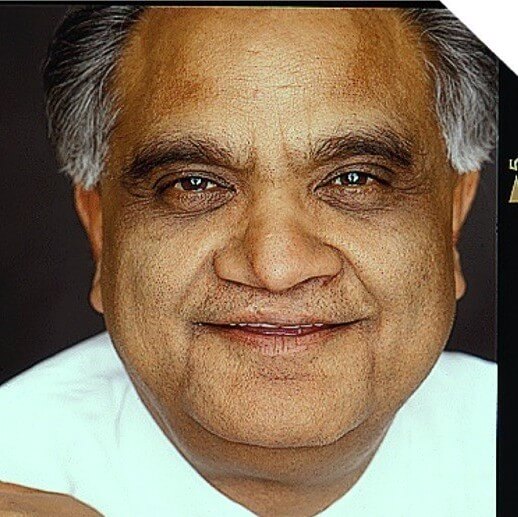Make Necessary Personnel Changes Quickly
Remove non-performers quickly and don't put off the dreaded 'conversation'.

I have yet to meet a leader with a perfect record of judging people. When you make a mistake, you have to be intellectually honest with yourself and cut your losses. Give the person a chance, but don’t drag your feet because you dread the conversation.
Waiting too long to remove a non-performer has ended the careers of many senior leaders. In one case, a division head was underperforming because he wouldn’t face up to the fact that one of the people reporting to him was completely mismatched to the job.
His boss questioned why he kept the person in the job, and the division head admitted, “I hate this part of the job.” With some coaching, the division head finally overcome his psychological blockage. He later told his boss, “My instincts were telling me I had to replace him. You gave me the courage to move.”
Non-performers—the people who are repeatedly unable to do what they agreed to do—are anathema to high performance. If they don’t improve, you have to move them as soon as possible.
Many managers don’t, because they want to be liked, they fear the person’s reaction, or they’ve already invested so much in trying to make the person succeed. They underestimate the negative effect a non-performer has on other people, who feel like they’re pulling all the weight.
Think of it as a poor fit rather than failure. The non-performer may just be in the wrong job. Try moving a low-performer into a job that’s a better match for his talents.
"Many managers want to be liked, they fear the person’s reaction, or they’ve already invested too much in trying to make the person succeed"
If that doesn’t work, then it’s probably not an issue of fit, it’s an issue of the person’s quality. In that case, cut your losses quickly.
You also have to distinguish between people who lack the ability or drive to deliver and those who fall short because they are taking appropriate risks.
Exploring new markets, processes, products, or services is necessary to keep your company competitive, but such experiments may occasionally fail, when, for instance, the assumptions turn out to be wrong. That’s different from taking reckless actions that were not thought through.
Manage the Intersections
If you’re starting your leadership career, you might think the work of a corporate board of directors is far different from yours, but in fact some issues are the same at every organisational level.
The business press is rife with stories of companies that ran aground because the board, which is ultimately in charge of appointing and removing the CEO, stood idle.
In a surprising number of those cases, the board was star-studded. Individual members had proven records of accomplishment leading other large business organisations and stellar reputations for high integrity.
These highly qualified individuals didn’t take corrective action soon enough because they didn’t work well as a group.
The stakes might be smaller, but your challenge to get people working well together is much the same. If you’re in a position to choose the group and control the incentives, that’s great.
Even if you can’t, you can practice this skill—managing the intersections—with any group you are part of.
Every sizable organization is divided into departments and/or business functions as well as geographic or business units. But a great deal of work gets done by people who exchange information across those organizational boundaries and collaborate on projects and decisions.
To make cross-functional work happen more smoothly, some organizations have a matrix structure, in which people have multiple reporting relationships.
Myriad software applications and online platforms exist to facilitate project management, knowledge sharing, and communication across time zones, but they can’t ensure that individual efforts get integrated, and they surely don’t overcome the human behavior that tends to get in the way.
That’s where you come in. Think of yourself as an integrator, a term I use to describe leaders who are particularly good at getting diverse groups of people to coalesce.
Integrators get people to see beyond the narrow view of their organizational silo or expertise by focusing on the bigger picture of what is best for the unit or company as a whole.
It doesn’t take formal authority to be an integrator. I’ve seen engineers and junior managers play that role.
It takes skill in getting the best ideas and necessary facts on the table, helping the group shape alternatives, and keeping individuals focused on the common goal as they wrestle to make trade-offs and decisions.
Leaders who understand this role and play it skillfully will unleash tremendous energy. All of us have experienced the disappointment if not outright frustration of being involved in group work that doesn’t go anywhere: people won’t break from their entrenched opinions, trade-offs aren’t made, some members don’t meet their commitments or fail to show up.
These and other common problems drain energy, time, and money. Given that one group’s work is interconnected with others—the output from a product development team, for instance, affects what the marketing team and senior leaders can accomplish—any slowdown, failure to deliver, or toxicity spreads.
Helping groups function well has the opposite effect. The energy is contagious. Applied to the organisation’s most critical intersections—for example, among the CFO, CHRO, and chief strategy officer—skillful integration can energise the entire company.
Recognising the importance of integration, Sajan Pillai, CEO of UST Global, the multinational provider of IT services and solutions, created a new job category to do just that, and made it part of the track to become a senior leader.
The new job began as a kind of experiment in 2012, when the company assigned nine people to the role, carefully chosen because they knew the company well, understood the business, knew a lot of people in the company, had a sense of urgency to execute things, and were sensitive to customers.
Their explicit duty was to help knit the team together and identify whatever was getting in the way of accomplishing the goal. Sometimes it meant seeking help from an expert in another part of the company, or in one case, enlisting the help of a senior executive to close a sale that was teetering.
Combining their social skills and business knowledge, they were able to make the right connections among people and clarify things, so results materialized faster. Morale went up as well, and in 2016 the company expanded its integrator ranks.
This is an edited extract from The High-Potential Leader: How to Grow Fast, Take on New Responsibilities, and Make an Impact, by Ram Charan (Wiley, April 2017).
Thanks for signing up to Minutehack alerts.
Brilliant editorials heading your way soon.
Okay, Thanks!




